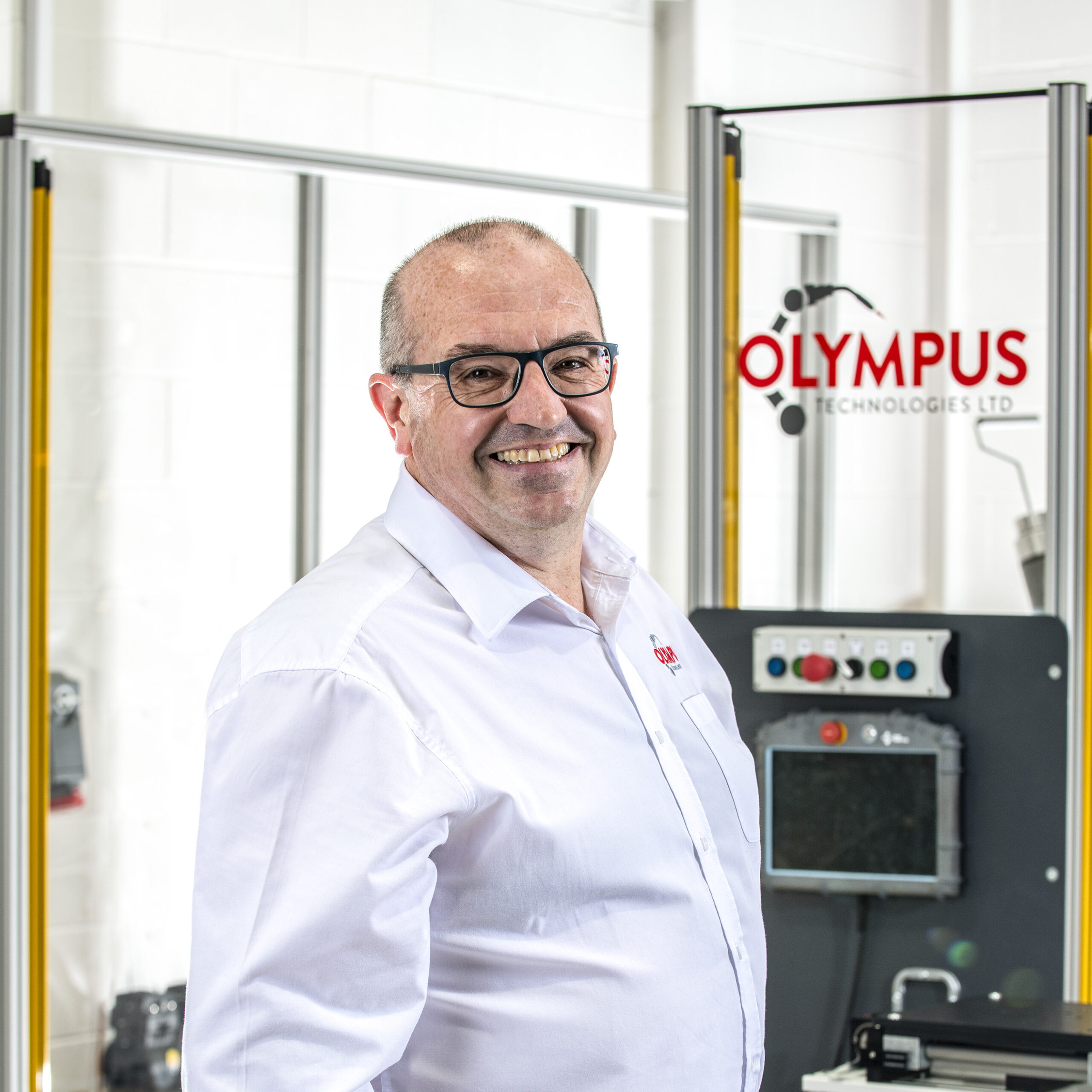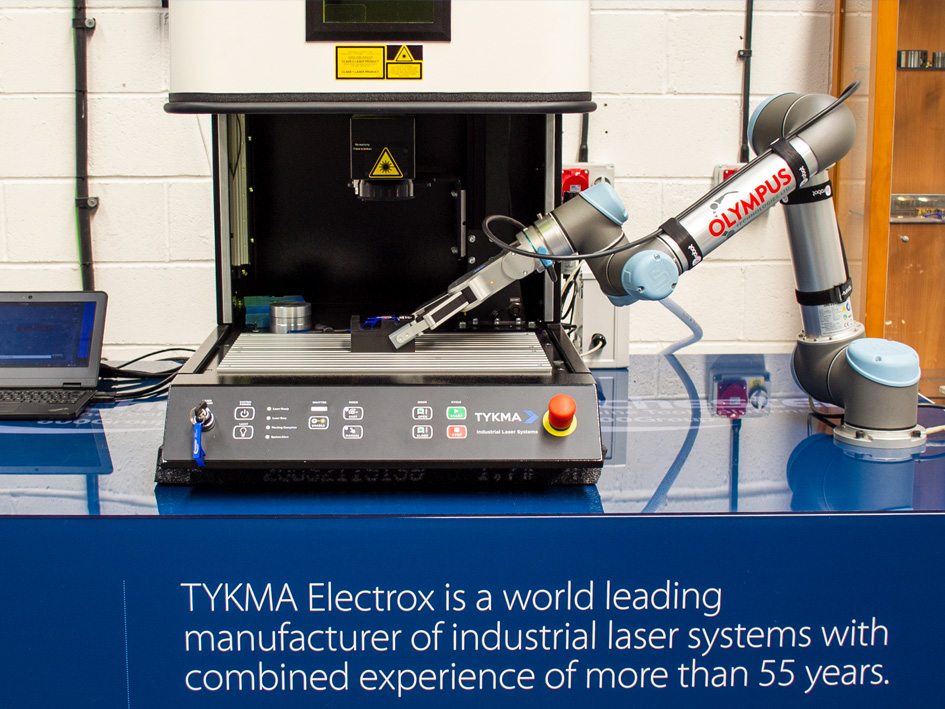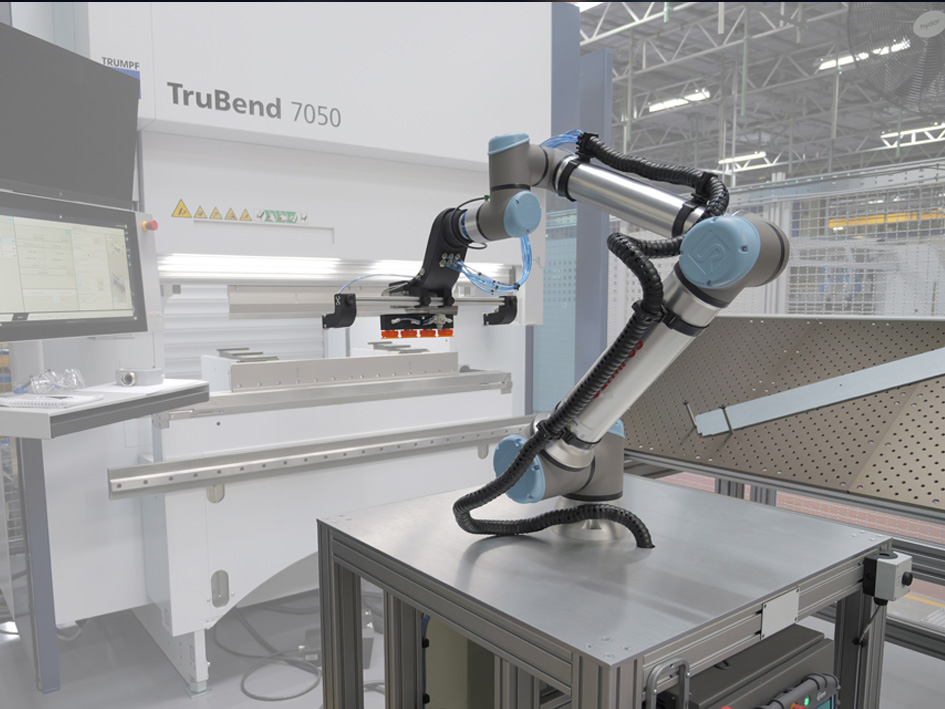Why Robotic Laser Marking Matters
Laser marking systems play a crucial role in manufacturing, delivering permanent identifiers that improve traceability, support automated inspection, and meet regulatory requirements.
Whether for part marking in automotive or laser engraving in medical devices, the combination of speed, accuracy, and repeatability makes the laser marking process hard to beat.
But selecting the right robot isn't just about hardware.
It means aligning technologies, tasks, and objectives within a reliable framework that achieves high-quality marking results at scale.
Understanding Laser Marking Technology
What Is Laser Marking?
Laser marking uses a focused beam to create visible identifiers on a surface. These marks - like QR codes, serial numbers, or branding - are often applied for identification, traceability, or compliance. While often grouped with laser engraving and etching, each of these techniques varies in depth, process, and application.
Types of Laser Marking Systems
Different materials require different laser types. A fibre laser works best for metals, CO₂ lasers suit organics like wood or glass, and UV lasers are preferred for delicate components such as plastics or medical tools. To maintain consistent marking quality, it’s important to match your system to the specific material.
Benefits of Robotics in the Marking Process
Adding robotics to the laser marking process improves consistency, safety, and overall efficiency. Robots can position parts, manage continuous cycles, and detect defects in real time. When paired with a well-suited laser marking system, robotic automation boosts throughput, improves compliance, and reduces human error.
Key Considerations When Selecting a Robot
Choosing the best robot means assessing your needs across systems, materials, and long-term goals. Several aspects must align to make the investment worthwhile.
Compatibility with Laser Systems
The robot and laser must communicate seamlessly. Choose models that support standard protocols and integrate with your control software or automation testing plan. This is key to achieving system-wide efficiency and reliable testing outcomes.
Payload and Reach
Determine the size and weight of your parts before you choose. The robot must handle different materials safely and consistently, especially in large scale environments. A mismatch in payload can compromise the entire process.
Precision and Repeatability
For traceability, accuracy is everything. High repeatability is an important factor, particularly in industries where failed test cases can lead to downtime or compliance issues. Precision becomes even more critical when marking small or sensitive surfaces.
Speed and Cycle Time
Speed affects cycle time but should never come at the cost of marking quality. Evaluate how well the robot maintains stability and legibility at higher speeds. Balancing these elements helps achieve consistent, readable marks.
Flexibility and Scalability
If your company plans to grow, look for new features like redeployable arms or software updates. A flexible solution allows you to respond to changes in product design, software, or automation demands.
Safety and Compliance
Safety is a non-negotiable. Your robotic system must include guards, light curtains, and emergency stops. It should also meet all regulatory requirements, especially when deployed in high-risk or precision-heavy industries.
Popular Robot Types for Laser Marking Applications
Different projects call for different tools. Here are four common robot types used in laser marking:
- Articulated Robots – Offer multi-axis flexibility, ideal for complex marking angles or irregular shapes
- SCARA Robots – Suited for high-speed, planar marking tasks, common in electronics
- Cartesian Robots – Perfect for structured environments with linear movement needs
- Collaborative Robots (Cobots) – Safe for shared spaces and quicker to program for fast deployment
Each option comes with its own strengths, depending on your objectives, workspace, and framework.
Seamless Integration With Automation Systems
To be truly efficient, your setup should align every part of the automation process - from part handling to inspection and marking.
Vision Systems
Vision systems help robots detect defects, guide part alignment, and adapt to variation in surface conditions. They support high-quality output, especially when handling complex geometries.
Conveyor Integration
Incorporating conveyors allows for continuous operations. Parts can be marked as they move, improving efficiency and keeping pace with large scale demands.
Software and Control
Strong control software supports repeatable workflows, integration with testing protocols, and live adjustments. A well-designed framework can streamline your automation testing plan and reduce downtime.
Real-World Applications and Industry Examples
Here are four examples where robotic laser marking proves valuable:
Automotive
Marks VINs, batch numbers, and structural parts to improve traceability and support inspection.
Medical Devices
Applies micro-marks for UDI compliance, helping ensure hygiene and product history.
Electronics
Marks circuit boards and microchips with unique identifiers for testing and serialisation.
Aerospace and Defence
Provides durable, high-contrast marks that hold up in extreme environments, meeting international standards.
Cost and ROI Considerations
Initial Investment
Start-up costs depend on robot type and system complexity. Cobots offer fast deployment, while articulated robots provide longer-term benefits in performance and flexibility.
Operational Costs
Account for maintenance, training, software, and energy use. An integrated setup reduces human intervention and overall labor cost.
Return on Investment
Fewer defects, faster cycle times, and reliable marking all lead to faster ROI. Well-planned automation delivers savings in both materials and time.
What’s Next for Robotic Laser Marking?
Implementing automation is evolving fast. With AI and machine learning, robots will soon adjust marking in real time, respond to surface irregularities, and optimize test cases on their own.
At the same time, compact machines, user-friendly software, and sustainable lasers are improving access and uptime. For any company looking to compete, adopting these solutions is no longer optional - it’s essential.
Conclusion: Choose with Confidence
To choose the best robot for laser marking applications, focus on your materials, production needs, and long-term automation goals. The right robot supports accuracy, safety, and growth, helping your team deliver consistent results from first mark to final shipment.
Look for systems backed by reliable software, a capable team, and a roadmap for scale. With the right setup, your robot does more than just mark - it supports the future of your manufacturing.
FAQs
What should I consider when choosing a robot for laser marking applications?
Start with the material, part size, and production volume. Then check for marking quality, software compatibility, and alignment with your broader automation process.
Can robots detect defects during the marking process?
Yes. Integrated vision systems allow robots to scan each surface, detect defects, and adjust placement for accurate marking.
How does an automation testing plan support laser marking systems?
An automation testing plan validates how the system performs across different test cases, helping ensure stable results with varied materials and parts.
Are collaborative robots effective for large-scale laser marking?
Collaborative robots are ideal for flexible, small-batch tasks. For large scale needs, traditional robots typically offer greater speed and long-term efficiency.














